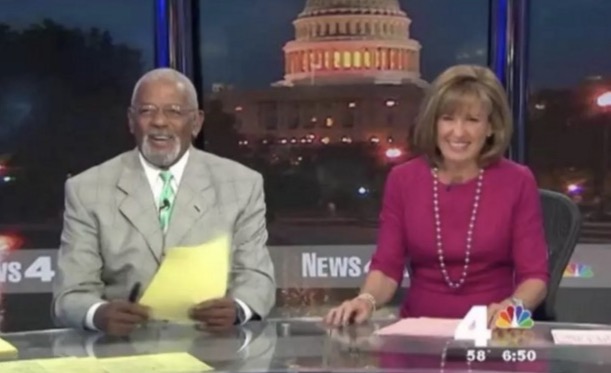Fast-paced, high story count newscasts can be chemistry-killers — especially if anchors assume that less time on-screen together automatically means less time for connection and relationship. The good news: It ain’t necessarily so.

As we noted when we shared this clip over the holidays, we were originally attracted to it as an example of the way great teams interact and work together even when they are not necessarily seen together. Here’s one more look, this time with some thoughts on the choices that make it work.
The interaction is content-driven, as opposed to shot-driven. Vance and Gentzler do not assume that the fact they cannot be seen automatically negates their presence or their ability to react and develop the conversation. In face, there is something refreshing and unpredictable about the fact that we hear from them without seeing them. It reinforces the idea that they are doing exactly what great anchors always do better than most — paying attention.
The sequence is spontaneous. The newscast experience is ultimately diminished when it is limited to what can be premeditated and pre-scripted. The moments that are memorable — and that contribute most to the impression that an anchor team is something other than generic — are the reactions and conversations that happen on the fly.
Important note: Spontaneity is a team sport. Talent, producer and director all have to be open to it and able to go with it when these moments happen. In this case, hats off to the behind-the -scenes decision to open the mics and keep them open throughout.
The talent don’t try to hide the fact that they are sharing space. Their willingness to throw comments off-screen to each other positively reinforces the idea that they are in special relationship as well as in conversation with each other. The interaction here feels more personal and informal than it does when everything, whether to colleagues or the viewer, is addressed through the camera.

The sequence moves aggressively forward. Too often, we assume that maintaining momentum is a function of eliminating the interaction, and the result is teams that become generic andforgettable. The better teams understand instead how to react in a way that keeps the newscast moving aggressively forward. They can interact and even play at times, because they know how to do it in a way that does not sacrifice their role as caretakers of the momentum of the program.
The entire team takes the premise — the weatherman’s confusion about Halloween and Thanksgiving — and runs with it. Great improvisational actors will tell you that a critical key to effectiveness in any spontaneous sequence is accepting and going with whatever reality is introduced by the other actors in the scene. If an actor says the sky is purple you begin by accepting that they see a purple sky, because denying their “reality” can be a scene killer. The genius of this sequence is the way that Kammerer’s original confusion about Halloween and Thanksgiving is noted and expanded by others on the team.
The team can laugh at themselves and have fun with each other. There is not a moment here that is impatient or mean-spirited. Meteorologist Doug Kammerer sets the tone by acknowledging his confusion and laughing at himself. It enables everyone to play along with delight and even affection. You have no doubt that these people all really like and respect each other.



